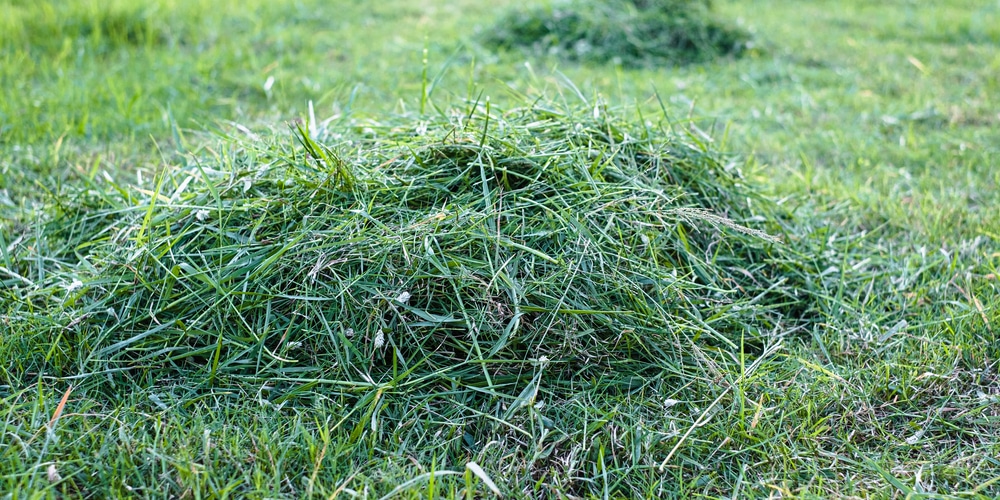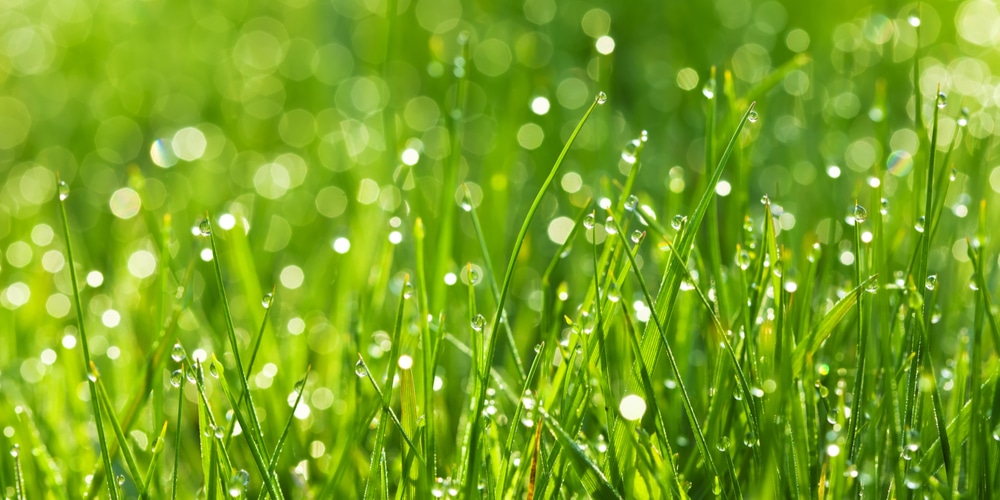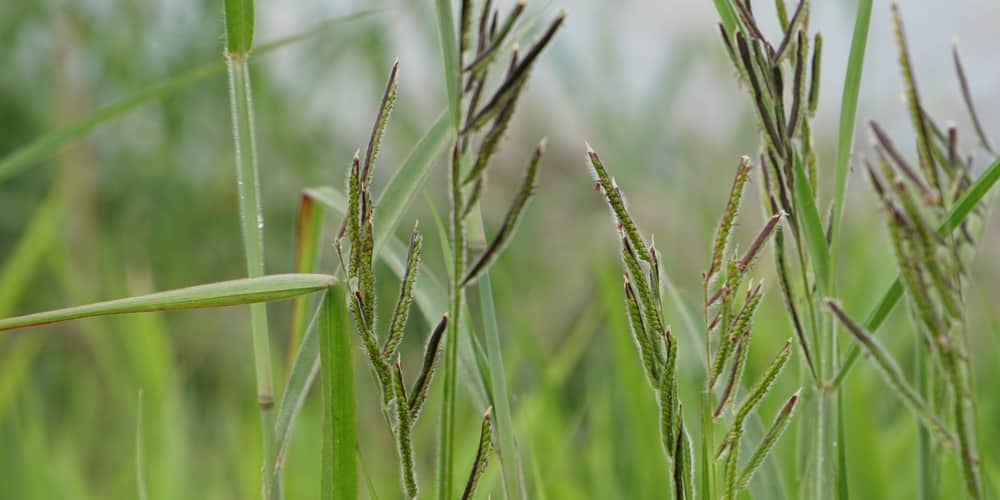Illinois Climate and Soil
To achieve a lush lawn in Illinois, recognizing the unique challenges of the state’s climate and soil types is crucial for proper lawn care and maintenance.
Identifying Soil Types
Your lawn’s health heavily depends on the soil type present in your yard.
- Clay Soil: This type holds water and nutrients well but tends to compact easily, which can hinder grass root growth.
- Silt Soil: It’s fertile and retains water but can become compacted and may suffer from poor drainage.
- Sandy Soil: While it has excellent drainage, it often lacks the ability to retain moisture and nutrients.
It is advisable to perform a soil test to determine the pH level and nutrient profile of your soil, which will help you amend it correctly for optimal lawn growth.
Climate Considerations for Lawn Care
Illinois experiences a continental climate with hot summers and cold winters, making lawn care scheduling a bit challenging:
- Summer: Your lawn will require more water due to higher temperatures and potential drought conditions. Choose warm-season grass types which peak in growth during this time.
- Winter: The frigid cold can freeze the soil and halt lawn growth. Proper winterization is key to protecting your lawn during this dormant period.
- Spring/Fall: These transitional seasons are ideal for planting cool-season grasses and repairing any damage from summer or winter stress.
Planning Your Lawn Care Schedule
Crafting a verdant lawn in Illinois demands meticulous planning. To ensure your success, address the specific needs of your turf during each changing season, and understand the optimal timing for feeding and aerating your grass.
Seasonal Lawn Maintenance
Spring: Prepare for a lush summer lawn in spring.
- Early in the season, focus on removing debris and thatch to facilitate nutrient delivery to the soil. Rake gently and fix any patches with new seed.
- Mid-spring, apply pre-emergent herbicides to prevent weed growth.
- Early Summer: During this period, insects begin to populate, so keep an eye out for pests.
- A healthy mowing regimen—cutting no more than one-third of the grass blade length—preserves lawn health and appearance.
- Late Summer: Monitor and adjust your watering practices. Illinois summers can get hot, so ensure you provide your lawn with 1 to 1.5 inches of water per week.
Fall: Autumn is the perfect time for repairing your lawn.
- Dethatching, overseeding, and repairing bald spots prepares your lawn for the cold ahead.
- Post-emergent herbicides can be applied to tackle any remaining weeds.
Winter: As the cold sets in, minimize foot traffic to protect dormant grass. It’s also an opportune time to service your lawn care equipment.
Best Times for Fertilization and Aeration
Fertilization:
The local climate plays a pivotal role in the timing of fertilization. Generally, you should fertilize your Illinois lawn at least twice a year.
- Early Spring: Energize your lawn from its winter dormancy with a balanced feed.
- Fall: Late-season fertilization helps to fortify the roots for the winter ahead.
| Season | Fertilizer Type | Application Timeframe |
|---|---|---|
| Spring | Balanced (e.g., 10-10-10) | March-April |
| Fall | High potassium for root growth | September-October |
Aeration:
Aeration combats compaction, allowing your lawn to breathe and promoting nutrient uptake.
- Spring: Aerating can be beneficial, but often it’s best done in the fall when the lawn is under less stress.
- Fall: Ideally, aerate your lawn either 1-2 weeks before or after applying fall fertilizer.
Selecting the Right Grass Type
When establishing a lush lawn in Illinois, choosing the right grass type is crucial for success. Illinois features a transition zone climate, which means you’ll need a grass that can handle both cool winters and hot summers.
- Cool-Season Grasses: These are suitable for the northern part of the state.
- Kentucky Bluegrass is a popular choice for its fine texture and ability to self-repair.
- Perennial Ryegrass germinates quickly and offers a rich green hue.
- Fine Fescue thrives in shady areas with less fertile soil.
| Grass Type | Light Requirement | Maintenance Level | Tolerance |
|---|---|---|---|
| Kentucky Bluegrass | Full sun | Moderate | Moderate drought |
| Perennial Ryegrass | Full sun to part shade | Low to moderate | High foot traffic |
| Fine Fescue | Part shade | Low | Poor soil quality |
- Warm-Season Grasses: In southern Illinois, where summers are warmer, consider:
- Zoysia grass for its heat tolerance and dense growth.
- Bermuda grass, which is great for high traffic areas and recovers quickly from wear.
Watering and Drainage Techniques
Proper hydration and efficient water management are crucial for maintaining a lush lawn in Illinois. Adequate watering encourages deep root growth, while good drainage prevents waterlogging and root diseases.
Irrigation Methods
For consistent lawn health, you should:
- Water Early: Water your lawn early in the morning to reduce evaporation and decrease the likelihood of fungal diseases.
- Smart Scheduling: Utilize smart irrigation controllers that can adjust watering based on weather conditions.
- Deep Watering: Aim for infrequent but deep watering sessions to encourage roots to grow deeper, which in turn makes your lawn more drought-resistant. To achieve this:
- Water to a depth of at least 1 inch, as measured by setting out small containers (like tuna cans) around your lawn.
Optimizing Soil Drainage
To ensure your lawn doesn’t become waterlogged:
- Amend Soil: Mix in organic material such as compost or peat moss to enhance soil structure and improve drainage.
- Aerate Regularly: Perform aeration at least once a year to alleviate soil compaction, allowing water and oxygen to reach the root zone.
- Implement a Drainage System if necessary:
- French drains or channel drains can be highly effective for areas prone to standing water.
Mowing and Maintenance Practices
Proper mowing is not just about keeping your lawn short; it’s about promoting a thick, healthy turf.
In Illinois, your mowing routine should adapt to the seasonal growth patterns of your grass.
Commence mowing in early spring when your grass begins to grow.
Mowing Height: Maintain a height of about 3 inches. This optimal height shades the soil, reducing water evaporation and deterring weeds.
- Spring and Fall: Grass grows more vigorously during these seasons. Mow once a week to maintain the correct height.
- Summer: Growth slows down. You might switch to mowing every other week, depending on rainfall and temperatures.
Mowing Technique:
- Use sharp blades to ensure clean cuts.
- Vary your mowing pattern to prevent soil compaction and grass rutting.
- If possible, mow when the grass is dry to avoid clumping of clippings.
Lawn Maintenance Tips:
- Clippings: Leave the clippings on the lawn after mowing to return nutrients to the soil.
- Watering: Water deeply but infrequently, encouraging deep root growth.
- Watering: Early morning is the best time to water to minimize evaporation and fungal diseases.
- Aeration: Annually aerate your lawn to improve nutrient penetration and relieve soil compaction.
- Dethatching: Do this as needed to remove excess thatch that can prevent water and nutrients from reaching soil.
Frequently Asked Questions
The successful cultivation of a lush lawn in Illinois hinges on understanding the local climate and soil.
These FAQs are specifically tailored to give you a tactical edge in achieving your dream lawn.
What is the ideal lawn care schedule for attaining a lush lawn in Illinois?
Your lawn care schedule should align with Illinois’ growing seasons.
Start by planting grass seed from mid-August to mid-September when the soil is warm and moisture levels are favorable.
Regularly mow, water, and fertilize according to the needs of the grass type you’ve selected.
What steps should be taken throughout the year to maintain a healthy lawn in Northern Illinois?
During the spring, focus on clearing debris and applying pre-emergent herbicides.
Summertime demands consistent watering and mowing.
Prepare for fall with aeration, overseeding, and fertilization, and wrap up the year with winterization tasks like final mowing and applying suitable winter fertilizers.
Which fertilizers are recommended to achieve a lush green lawn in Illinois?
Select a fertilizer that is rich in nitrogen, phosphorus, and potassium, with a ratio appropriate for your soil type and grass.
It’s recommended to use slow-release fertilizers that nourish your lawn over time without risking nutrient overload.
How can I make my lawn thicker and greener?
To enhance thickness and color, apply a half-inch layer of quality compost in the early season and choose the right grass blend for your area.
Regular aeration promotes root growth while proper mowing height and fertilization schedules ensure your lawn stays vibrant.
What lawn treatments are most effective right now for enhancing grass health?
Applying compost tea is currently a popular method for increasing microbial activity and enhancing grass health.
Ensure the application rates and intervals are followed as recommended for the best effects on your lawn.
What is the process for cultivating a consistently beautiful lawn?
Achieve consistency by establishing a lawn care routine suitable for your grass type and local climate conditions.
Periodic soil testing, aeration, and correct mowing are fundamental to a vibrant and resilient lawn.
Additionally, watering and appropriate seasonal treatments are also necessary.
Last update on 2025-04-19 / Affiliate links / Images from Amazon Product Advertising API





